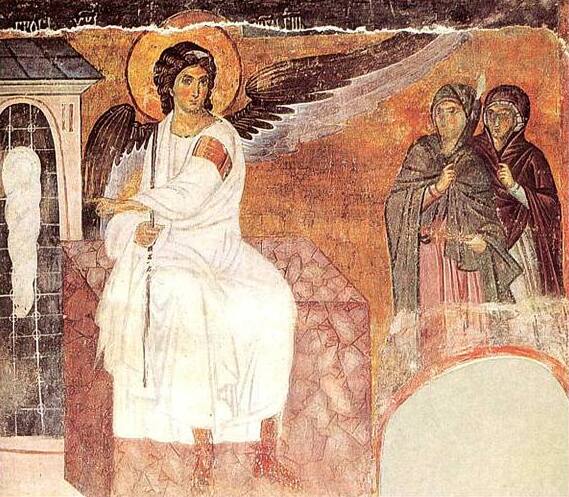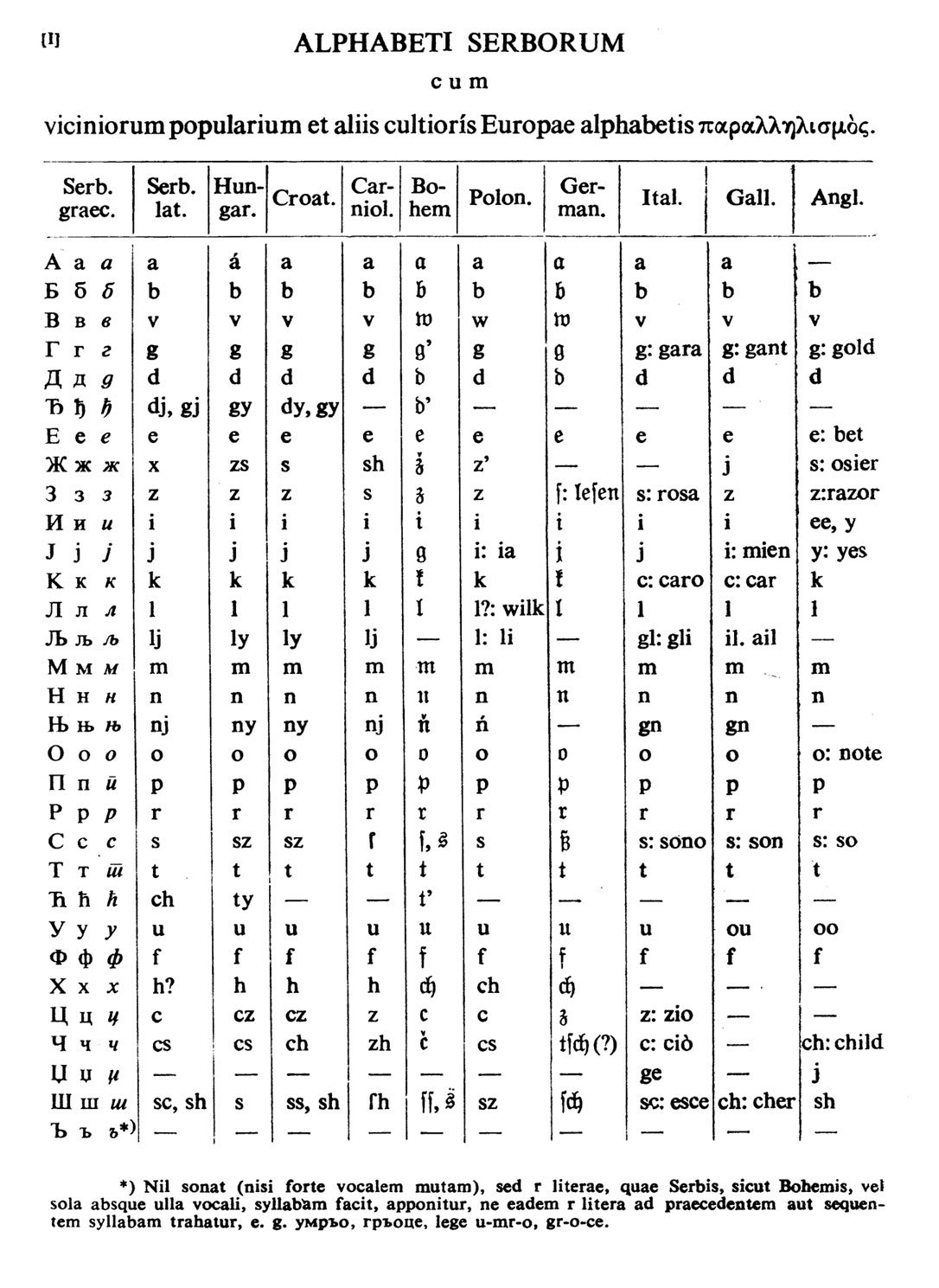|
Azbukum
Azbukum is a centre for Serbian language and culture founded in 1995. It offers various courses and programs aimed at promoting the language and culture of the Serbs, such as courses in Serbian, Ethno Camps, and Caravans through Serbia. It operates in Belgrade and Novi Sad, Serbia , image_flag = Flag of Serbia.svg , national_motto = , image_coat = Coat of arms of Serbia.svg , national_anthem = () , image_map = , map_caption = Location of Serbia (gree .... It also offers the Serbian Language Online Program, an Internet-based course for those who wish to study Serbian. The founder and director of Azbukum is Nataša Milićević-Dobromirov. External links Azbukum websiteSoutheast Europe Online: Azbukum University of Alberta: Serbian Cultural Club {{Novi Sad, state=autocollapse Culture of Serbia Culture of Vojvodina Education in Belgrade Education in Novi Sad Educational institutions established in 199 ... [...More Info...] [...Related Items...] OR: [Wikipedia] [Google] [Baidu] |
Education In Novi Sad
Novi Sad is one of the most important Serbian centers of higher education and research, with four universities, numerous professional, technical, and private colleges, and a couple of research institutes. Primary schools Public primary schools The municipality of Novi Sad has 37 schools (34 regular and 3 special ones) operating as primary schools. As many as 22 schools are located on the territory of the City of Novi Sad. In addition to Novi Sad, primary schools in this municipality are also located in places like: Bukovac, Novi Sad, Bukovac, Stepanovićevo, Futog, Budisava, Petrovaradin, Sremska Kamenica, Kovilj, Kisač, Veternik, Rumenka, Begeč, Šangaj and Kać. City of Novi Sad: Municipality of Novi Sad: Private primary schools There are 4 private primary schools in Novi Sad verified from the Ministry of Education. Secondary schools The municipality of Novi Sad has 16 public schools whose activity is secondary education, with 4 gymnasiums and 12 secondary vocational sc ... [...More Info...] [...Related Items...] OR: [Wikipedia] [Google] [Baidu] |
Novi Sad
Novi Sad ( sr-Cyrl, Нови Сад, ; #Name, see below for other names) is the List of cities in Serbia, second largest city in Serbia and the capital of the autonomous province of Vojvodina. It is located in the southern portion of the Pannonian Plain on the border of the Bačka and Syrmia geographical regions. Lying on the banks of the Danube river, the city faces the northern slopes of Fruška Gora and it is the fifth largest of all List of cities and towns on the river Danube, cities on the river Danube. It is the largest Danube city that is not the capital of an independent state. , the population of the city proper area totals 260,438 while its urban area (including the adjacent settlements of Petrovaradin and Sremska Kamenica) comprises 306,702 inhabitants. According to the city's Informatika Agency, Novi Sad had 415,712 residents in 2025. Novi Sad was founded in 1694, when Serb merchants formed a colony across the Danube from the Petrovaradin Fortress, a strategic Habsb ... [...More Info...] [...Related Items...] OR: [Wikipedia] [Google] [Baidu] |
Serbian Language
Serbian (, ) is the standard language, standardized Variety (linguistics)#Standard varieties, variety of the Serbo-Croatian language mainly used by Serbs. It is the official and national language of Serbia, one of the three official languages of Bosnia and Herzegovina and co-official in Montenegro and Kosovo. It is a recognized minority language in Croatia, North Macedonia, Romania, Hungary, Slovakia, and the Czech Republic. Standard Serbian is based on the most widespread dialect of Serbo-Croatian, Shtokavian (more specifically on the dialects of Šumadija–Vojvodina dialect, Šumadija-Vojvodina and Eastern Herzegovinian dialect, Eastern Herzegovina), which is also the basis of Croatian language, standard Croatian, Bosnian language, Bosnian, and Montenegrin language, Montenegrin varieties and therefore the Declaration on the Common Language of Croats, Bosniaks, Serbs, and Montenegrins was issued in 2017. The other dialect spoken by Serbs is Torlakian dialect, Torlakian in south ... [...More Info...] [...Related Items...] OR: [Wikipedia] [Google] [Baidu] |
Serbian Culture
Serbian culture is a term that encompasses the Serbian art, artistic, Serbian cuisine, culinary, Serbian literature, literary, Music of Serbia, musical, Politics of Serbia, political and Serb traditions, social elements that are representative of Serbs and Serbia. History The Byzantine Empire had a great influence on Serbian culture as it initially governed the Byzantine and Frankish Empire, Frankish frontiers in the name of the emperors. Serbs soon formed an Principality of Serbia (early medieval), independent country. They were baptised by Eastern Orthodox missionaries and adopted the Cyrillic script, with both Latin and Catholic influences in the southern regions. The Republic of Venice influenced the maritime regions of the Serbian state in the Middle Ages. The Serbian Orthodox Church gained autocephaly from Constantinople in 1219. The pope declared Stefan the First Crowned king, starting a prosperous Serbia in the Middle Ages, medieval period of Serbian culture. The ... [...More Info...] [...Related Items...] OR: [Wikipedia] [Google] [Baidu] |
Serbs
The Serbs ( sr-Cyr, Срби, Srbi, ) are a South Slavs, South Slavic ethnic group native to Southeastern Europe who share a common Serbian Cultural heritage, ancestry, Culture of Serbia, culture, History of Serbia, history, and Serbian language, language. They primarily live in Serbia, Kosovo, Bosnia and Herzegovina, Croatia, Montenegro as well as in North Macedonia, Slovenia, Germany and Austria. They also constitute a significant diaspora with several communities across Europe, the Americas and Oceania. The Serbs share many cultural traits with the rest of the peoples of Southeast Europe. They are predominantly Eastern Orthodoxy, Eastern Orthodox Christians by religion. The Serbian language, Serbian language (a standardized version of Serbo-Croatian) is official in Serbia, co-official in Kosovo and Bosnia and Herzegovina, and is spoken by the plurality in Montenegro. Ethnology The identity of Serbs is rooted in Eastern Orthodoxy and traditions. In the 19th century, the ... [...More Info...] [...Related Items...] OR: [Wikipedia] [Google] [Baidu] |
Belgrade
Belgrade is the Capital city, capital and List of cities in Serbia, largest city of Serbia. It is located at the confluence of the Sava and Danube rivers and at the crossroads of the Pannonian Basin, Pannonian Plain and the Balkan Peninsula. The population of the Belgrade metropolitan area is 1,685,563 according to the 2022 census. It is one of the Balkans#Urbanization, major cities of Southeast Europe and the List of cities and towns on the river Danube, third-most populous city on the river Danube. Belgrade is one of the List of oldest continuously inhabited cities, oldest continuously inhabited cities in Europe and the world. One of the most important prehistoric cultures of Europe, the Vinča culture, evolved within the Belgrade area in the 6th millennium BC. In antiquity, Thracians, Thraco-Dacians inhabited the region and, after 279 BC, Celts settled the city, naming it ''Singidunum, Singidūn''. It was Roman Serbia, conquered by the Romans under the reign of Augustus and ... [...More Info...] [...Related Items...] OR: [Wikipedia] [Google] [Baidu] |
Serbia
, image_flag = Flag of Serbia.svg , national_motto = , image_coat = Coat of arms of Serbia.svg , national_anthem = () , image_map = , map_caption = Location of Serbia (green) and the claimed but uncontrolled territory of Kosovo (light green) in Europe (dark grey) , image_map2 = , capital = Belgrade , coordinates = , largest_city = capital , official_languages = Serbian language, Serbian , ethnic_groups = , ethnic_groups_year = 2022 , religion = , religion_year = 2022 , demonym = Serbs, Serbian , government_type = Unitary parliamentary republic , leader_title1 = President of Serbia, President , leader_name1 = Aleksandar Vučić , leader_title2 = Prime Minister of Serbia, Prime Minister , leader_name2 = Đuro Macut , leader_title3 = Pres ... [...More Info...] [...Related Items...] OR: [Wikipedia] [Google] [Baidu] |
Nataša Milićević-Dobromirov
Natasha is a name of Russian origin. It is the diminutive form of the Latin name Natalia, which means "born on Christmas Day". Notable people * Natasha Aguilar (1970–2016), Costa Rican swimmer * Natasha Allegri (born 1986), American creator, writer, storyboard revisionist, and cartoonist * Natascha Artin Brunswick (1909–2003), German-American mathematician and photographer * Natasha Arthy (born 1969), Danish screenwriter, film director and producer * Natascha Badmann (born 1966), Swiss triathlete * Natasha Badhwar (born 1971), Indian author * Natasha Barrett (other), several people * Natasha Beaumont (born 1974), Malaysian-Australian actress * Natasha Bedingfield (born 1981), British singer * Natascha Bessez (born 1986), American singer * Natasha Bowen, Nigerian Welsh writer * Natasha J. Caplen, British-American geneticist * Natasha Chmyreva (born 1958), Russian tennis player * Natasha Chokljat (born 1979), Australian netball player * Natasha Coates (born c. 1995) ... [...More Info...] [...Related Items...] OR: [Wikipedia] [Google] [Baidu] |
Culture Of Serbia
Serbian culture is a term that encompasses the Serbian art, artistic, Serbian cuisine, culinary, Serbian literature, literary, Music of Serbia, musical, Politics of Serbia, political and Serb traditions, social elements that are representative of Serbs and Serbia. History The Byzantine Empire had a great influence on Serbian culture as it initially governed the Byzantine and Frankish Empire, Frankish frontiers in the name of the emperors. Serbs soon formed an Principality of Serbia (early medieval), independent country. They were baptised by Eastern Orthodox missionaries and adopted the Cyrillic script, with both Latin and Catholic influences in the southern regions. The Republic of Venice influenced the maritime regions of the Serbian state in the Middle Ages. The Serbian Orthodox Church gained autocephaly from Constantinople in 1219. The pope declared Stefan the First Crowned king, starting a prosperous Serbia in the Middle Ages, medieval period of Serbian culture. The ... [...More Info...] [...Related Items...] OR: [Wikipedia] [Google] [Baidu] |
Culture Of Vojvodina
Culture ( ) is a concept that encompasses the social behavior, institutions, and norms found in human societies, as well as the knowledge, beliefs, arts, laws, customs, capabilities, attitudes, and habits of the individuals in these groups.Tylor, Edward. (1871). ''Primitive Culture''. Vol 1. New York: J. P. Putnam's Son Culture often originates from or is attributed to a specific region or location. Humans acquire culture through the learning processes of enculturation and socialization, which is shown by the diversity of cultures across societies. A cultural norm codifies acceptable conduct in society; it serves as a guideline for behavior, dress, language, and demeanor in a situation, which serves as a template for expectations in a social group. Accepting only a monoculture in a social group can bear risks, just as a single species can wither in the face of environmental change, for lack of functional responses to the change. Thus in military culture, valor is counted ... [...More Info...] [...Related Items...] OR: [Wikipedia] [Google] [Baidu] |
Education In Belgrade
Education is the transmission of knowledge and skills and the development of character traits. Formal education occurs within a structured institutional framework, such as public schools, following a curriculum. Non-formal education also follows a structured approach but occurs outside the formal schooling system, while informal education involves unstructured learning through daily experiences. Formal and non-formal education are categorized into levels, including early childhood education, primary education, secondary education, and tertiary education. Other classifications focus on teaching methods, such as teacher-centered and student-centered education, and on subjects, such as science education, language education, and physical education. Additionally, the term "education" can denote the mental states and qualities of educated individuals and the academic field studying educational phenomena. The precise definition of education is disputed, and there are disagreements ... [...More Info...] [...Related Items...] OR: [Wikipedia] [Google] [Baidu] |




